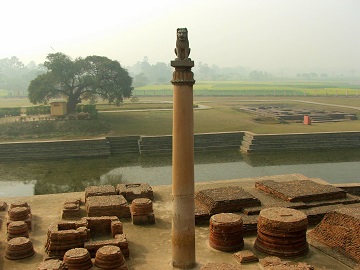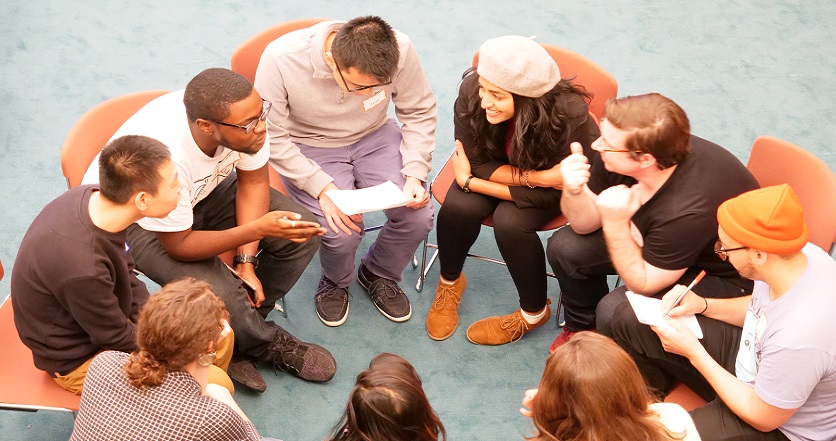The Guiding Light of the Lotus Sutra: A Conversation with Lokesh Chandra
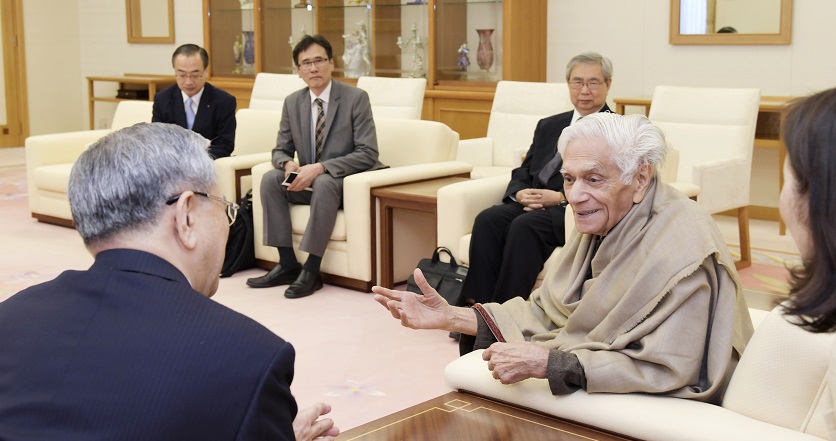
Lokesh Chandra is a renowned scholar of Tibetan, Mongolian and Sino-Japanese Buddhism. He has served as a member of Indian Parliament and is former vice president of the Indian Council for Cultural Relations and former chairman of the Indian Council of Historical Research. Currently, he serves as director of the International Academy of Indian Culture.
In the following interview with the Soka Gakkai’s Seikyo Shimbun newspaper, Dr. Chandra talks about the significance of the Lotus Sutra and the Soka Gakkai’s promotion of its core spirit.
Buddhism was transmitted from India to Japan along the Silk Road over a long period of time, in what can be termed the eastward transmission of Buddhism. Nichiren predicted the westward transmission of Buddhism, convinced that his Buddhist teachings would be transmitted from Japan to India and further spread across the world. Can you talk about the significance of this process?
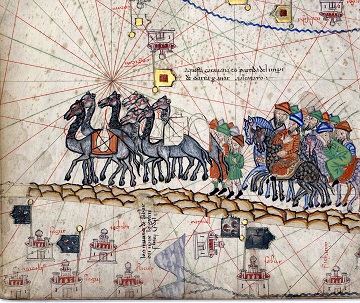
Since the third century BCE, India and China have a long sharing of culture. Beginning with horses, ultimately came monks on the horses and with them came the sutras. In China, women were not allowed to write Chinese characters. With the advent of Buddhism, the nuns began to write the sutras. The interflow of culture between India and East Asia was one of breaking down of the unequal relationship between monks and nuns, between men and women, and between the nobility and commoners. Anyone could go to a Buddhist monastery or convent and learn—from how to write to the study of the highest philosophical concepts. Whereas learning had been restricted to a specific rank of the nobility, children of commoners could go to a Buddhist monastery where the most esoteric sutras were open to them. Buddhism led to the process of softening the hierarchical distinctions of society.
The Lotus Sutra was integral to life in East Asia. The introduction of Buddhism in Japan was heralded by the Lotus Sutra. The commentary of Prince Shōtoku on the Lotus Sutra was the initiation of literature in Japan. [Prince Shōtoku (574–622) is credited with responsibility for the spread of Buddhism in Japan.]
For the past 1,400 years, Japan has continuously sought links with India, being keen to associate her Buddhism with the land of the Buddha.
[The seventh-century Chinese Buddhist priest and translator of Buddhist scriptures] Hsüan-tsang took Indo, the Sino-Japanese name of India, to be a transcription of indu, meaning “moon.” While Japan was the Land of the Sun, India was the Land of the Moon. It was natural in the conceptual visualization of Nichiren Daishonin that the Lotus Sutra travel from the Land of the Sun to the Land of the Moon. The transmission of the Lotus Sutra to India from Japan is a part of our shared historical relationship.
What is your view on the Soka Gakkai’s philosophy of Buddhist humanism and its place in the spiritual lineage of the Lotus Sutra?

We need to go back to the very foundations of Buddhism. Buddhism is not a theocentric (God-centered) religion, it is a homocentric (human-centered) religion with humans as the divine. From the very beginning, the concern of Buddhism has been human life. Wherever Buddhism went, the first step was to empower the smallest person in society as a monk to be venerated. Young people were able to elevate their quality of life through learning to write, make images, paint and meditate. The role of women in Buddhism has been unique. Buddhism always speaks of four sections of society: monks and nuns, laymen and laywomen. Buddhism is the only religion where women are given such a high respect in the sutras.
The multiple levels of humanism in the Lotus Sutra, whether social or intellectual or spiritual, have made it crucial in East Asia, and now, it is fast becoming the heritage of the world, beyond all discriminations. The Soka Gakkai imparts the perfume and profundity of the Lotus Sutra around the globe.
The values of humanism have to be clearly defined. They are human values, as well as natural humanism to include nature, and beyond both, they are the transhuman divine. These are three levels of life: human needs, the natural surrounds in which we evolve, and the transcendent, where we find the highest elevation. The Soka Gakkai has developed the idea of values. Values are not the rigidity of dogma, which becomes violence. The Soviet Union was based on the dogma of socialism, its obdurate insistence on theoretical formulations. It collapsed.
Lord Buddha had said that his was an open hand not a closed fist. President Daisaku Ikeda has given an open definition to values. The word “soka” means value-creation. Open values are important in the world today so that we can seek a new definition of life, a new relationship among nations, among people and among religions.
I heard that your father, Professor Raghu Vira, believed that Nichiren influenced Mahatma Gandhi.
Mahatma Gandhi had many people coming to see him. All came to speak to him about politics. The first persons to speak about culture were the Japanese monks of the Lotus Sutra. It was a charming experience for a leader of his stature to see the Japanese coming to his ashram, staying there and talking about culture. They were striking the gong thrice a day. Gandhiji asked my father as to why they strike the gongs. Father explained that Ashoka (268–232 BCE) [the third ruler of the Indian Maurya dynasty, who promoted the spread of Buddhism across Asia] says in his inscription that the bheri-ghosha has been converted into dharma-ghosha—the drums of war have become the drums of dharma. The Japanese monks were ringing this dharma-ghosha. Gandhiji got ever more interested that the Japanese were preserving this tradition which goes back to Ashoka himself. Ashoka was very much spoken about during the freedom struggle as one devoted to peace. Ashoka shone in our long history. Our national emblem is the Ashokan pillar.
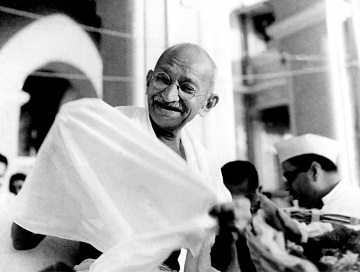
Gandhiji was impressed, and he included Nam-myoho-renge-kyo in his hymn book of the ashram. It was and is recited every day by the people living in the ashram. The Lotus Sutra entered into Indian life in 1935. During the last decades, the Soka Gakkai has been making major efforts to bring the Lotus Sutra and its values to India, with continuing success.
What do you think the role and contribution of the Lotus Sutra will be throughout the world in the future?
There is a decline of values in the West. The West seeks a new paradigm of valorization. What these values will be is not clear. Marx did not die with the Soviet Union, but his impact on economics has become a major force in the life of the humanity. Money and modern artificial intelligence dominate human lives. The West is rethinking a creative trans-material life. The Lotus Sutra can play a crucial role. President Ikeda used to have dialogues with important thinkers in the West. The Soka Gakkai should continue this process of dialogue with the eminent thinkers of the West. The future will primarily be conditioned by the West. It is imperative to acquaint people in the West with the values of the Lotus Sutra.
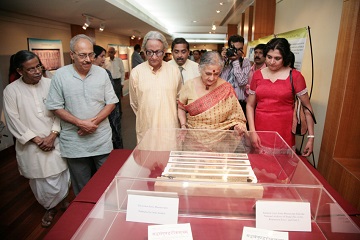
Buddhism is the only religion that has no dogmas. Nothing is absolute. The absolute creates violence and ultimately turns into terrorism. The Buddha said that he had an open hand. When anybody approached him to be initiated, he said, “Come and have a look.” If one felt convinced, one was initiated. Buddhism has given us bodhi wisdom [the wisdom of enlightenment]. Wisdom, or prajna, is central to life. So is compassion, or karuna. The Lotus Sutra can provide wisdom and compassion, prajna and karuna. They can become a strong foundation for soft power. The initiative has to be taken by the Soka Gakkai through special conferences on wisdom and compassion, in contrast to the mad race for sheer power and wanton prosperity that engenders insatiable violence.
We need compassion and wisdom. The idea of values has to be given prominence in the West. The Soka Gakkai has a major human responsibility. The decline of human life has to be stopped. The improvement of life values and their renaissance has to begin.





